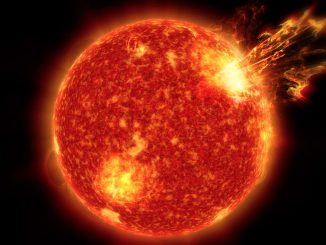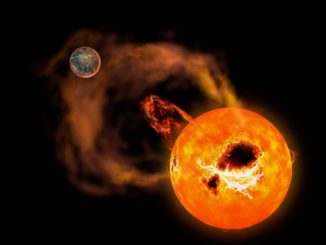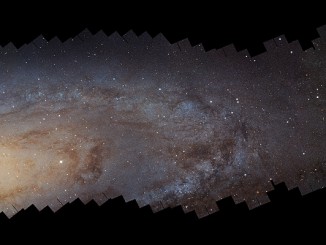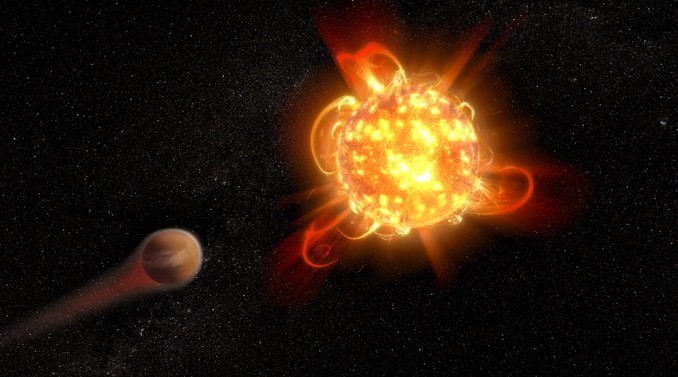
Astronomers using the Hubble Space Telescope have caught a titanic superflare in the process of erupting from the surface of a red dwarf. The outburst was more powerful than any ever detected from the Sun and likely would have wreaked havoc with any planets that might have been orbiting nearby.
Appropriately enough, the powerful flare was detected in a Hubble survey known as HAZMAT, a convoluted acronym standing for HAbitable Zones and M dwarf Activity across Time. The survey, led by Evgenya Shkolnik of Arizona State University, is studying red dwarfs at three different stages in their evolution: youth, midlife and old age.
Red dwarfs make up about three quarters of the stars in the Milky Way. By extension, most of the galaxy’s habitable-zone planets, those at the right distance from their suns for liquid water to exist on the surface, orbit red dwarfs.
“The goal of the HAZMAT program is to understand the habitability of planets around low-mass stars,” said Shkolnik. “These low-mass stars are critically important in understanding planetary atmospheres.”
That’s because ultraviolet radiation emitted in such outbursts can alter the chemistry of a planet’s atmosphere or, potentially, remove it altogether.
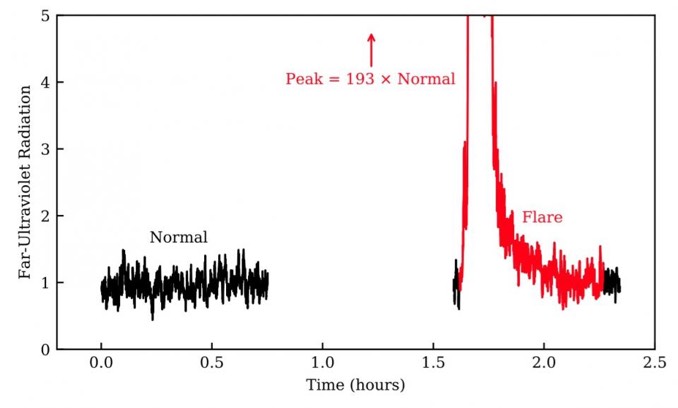
“Flares like we observed have the capacity to strip away the atmosphere from a planet,” said Parke Loyd, an ASU post-doctoral researcher and lead author of a paper describing the observations. “But that doesn’t necessarily mean doom and gloom for life on the planet. It just might be different life than we imagine. Or there might be other processes that could replenish the atmosphere of the planet. It’s certainly a harsh environment, but I would hesitate to call it a sterile environment.”
Observations of 18 flares from dwarfs as young as 40 million years indicate such stars generate flares 100 to 1,000 times more powerful than those seen with older suns. The most powerful flare observed, nicknamed the Hazflare, released 30 times more energy than any previously observed flare seen in ultraviolet light by Hubble’s spectrographs.
“When I realised the sheer amount of light the superflare emitted, I sat looking at my computer screen for quite some time just thinking, ‘Whoa,'” Parke said. “Most of the potentially habitable planets in our galaxy have had to withstand intense flares like the ones we observed at some point in their life. That’s a sobering thought.”

